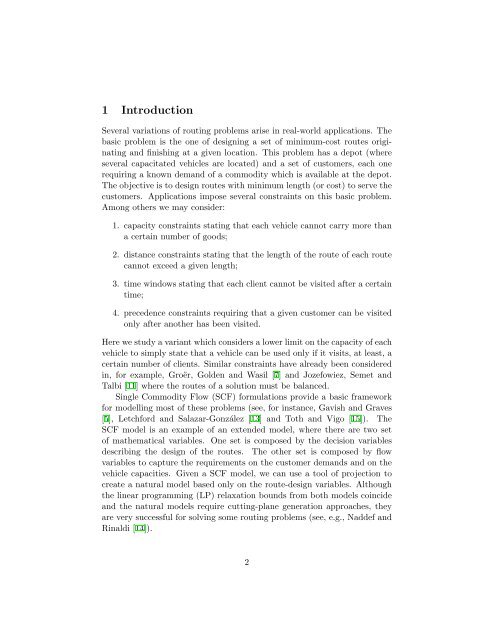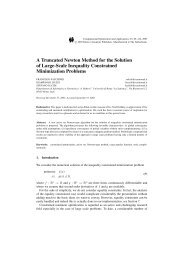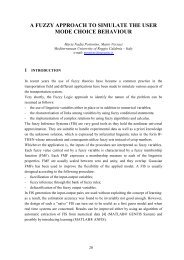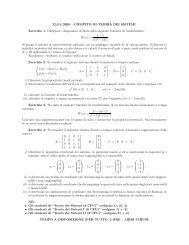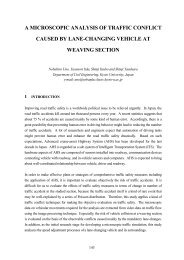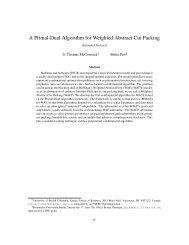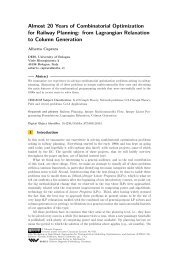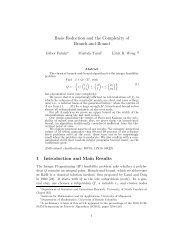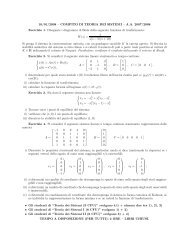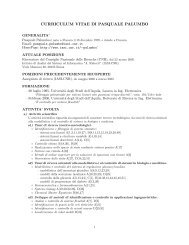Reverse Multistar Inequalities and Vehicle Routing ... - IASI-CNR
Reverse Multistar Inequalities and Vehicle Routing ... - IASI-CNR
Reverse Multistar Inequalities and Vehicle Routing ... - IASI-CNR
Create successful ePaper yourself
Turn your PDF publications into a flip-book with our unique Google optimized e-Paper software.
1 Introduction<br />
Several variations of routing problems arise in real-world applications. The<br />
basic problem is the one of designing a set of minimum-cost routes originating<br />
<strong>and</strong> finishing at a given location. This problem has a depot (where<br />
several capacitated vehicles are located) <strong>and</strong> a set of customers, each one<br />
requiring a known dem<strong>and</strong> of a commodity which is available at the depot.<br />
The objective is to design routes with minimum length (or cost) to serve the<br />
customers. Applications impose several constraints on this basic problem.<br />
Among others we may consider:<br />
1. capacity constraints stating that each vehicle cannot carry more than<br />
a certain number of goods;<br />
2. distance constraints stating that the length of the route of each route<br />
cannot exceed a given length;<br />
3. time windows stating that each client cannot be visited after a certain<br />
time;<br />
4. precedence constraints requiring that a given customer can be visited<br />
only after another has been visited.<br />
Here we study a variant which considers a lower limit on the capacity of each<br />
vehicle to simply state that a vehicle can be used only if it visits, at least, a<br />
certain number of clients. Similar constraints have already been considered<br />
in, for example, Groër, Golden <strong>and</strong> Wasil [7] <strong>and</strong> Jozefowiez, Semet <strong>and</strong><br />
Talbi [11] where the routes of a solution must be balanced.<br />
Single Commodity Flow (SCF) formulations provide a basic framework<br />
for modelling most of these problems (see, for instance, Gavish <strong>and</strong> Graves<br />
[5], Letchford <strong>and</strong> Salazar-González [13] <strong>and</strong> Toth <strong>and</strong> Vigo [15]). The<br />
SCF model is an example of an extended model, where there are two set<br />
of mathematical variables. One set is composed by the decision variables<br />
describing the design of the routes. The other set is composed by flow<br />
variables to capture the requirements on the customer dem<strong>and</strong>s <strong>and</strong> on the<br />
vehicle capacities. Given a SCF model, we can use a tool of projection to<br />
create a natural model based only on the route-design variables. Although<br />
the linear programming (LP) relaxation bounds from both models coincide<br />
<strong>and</strong> the natural models require cutting-plane generation approaches, they<br />
are very successful for solving some routing problems (see, e.g., Naddef <strong>and</strong><br />
Rinaldi [14]).<br />
2


